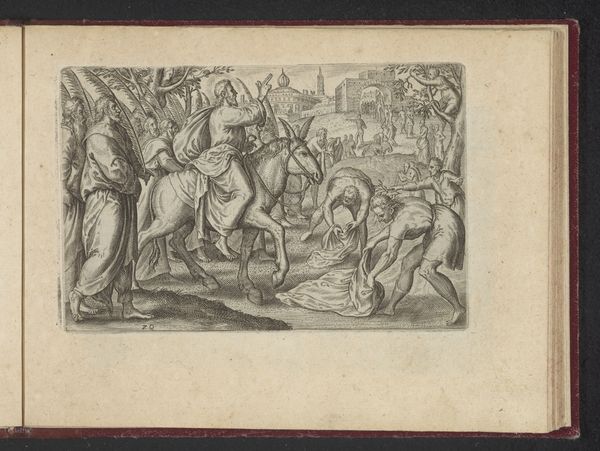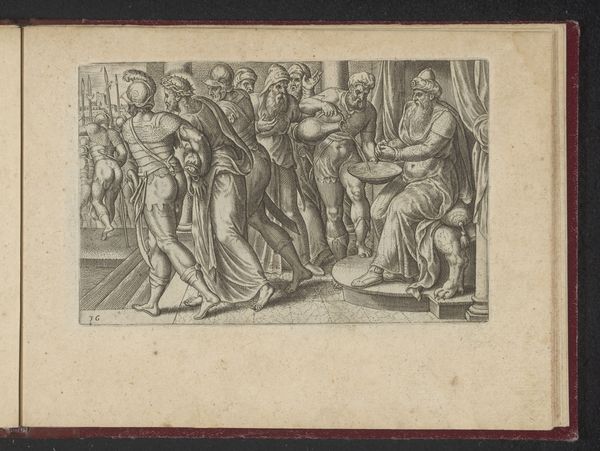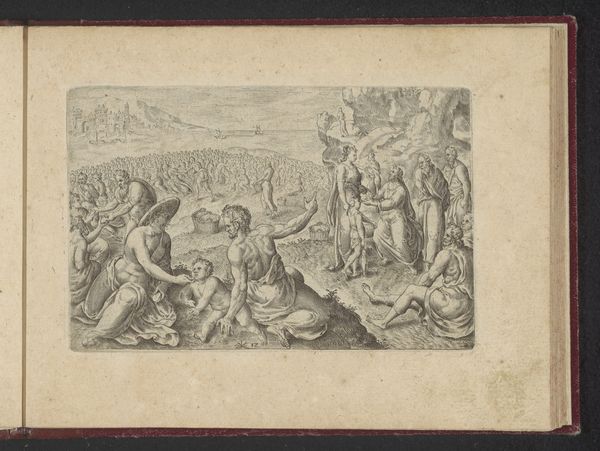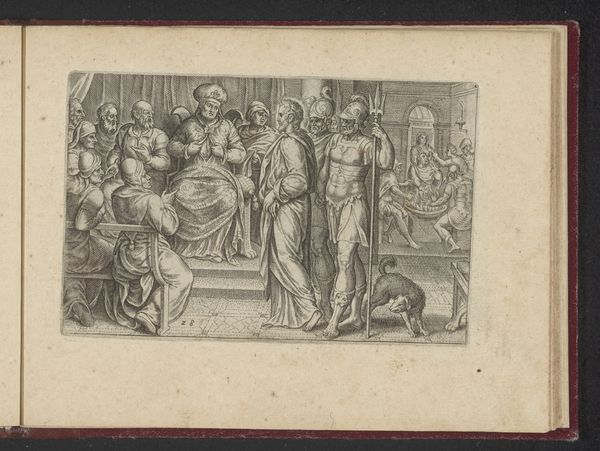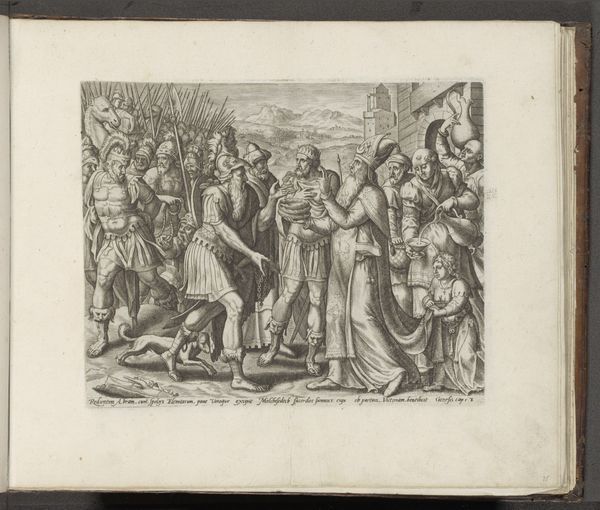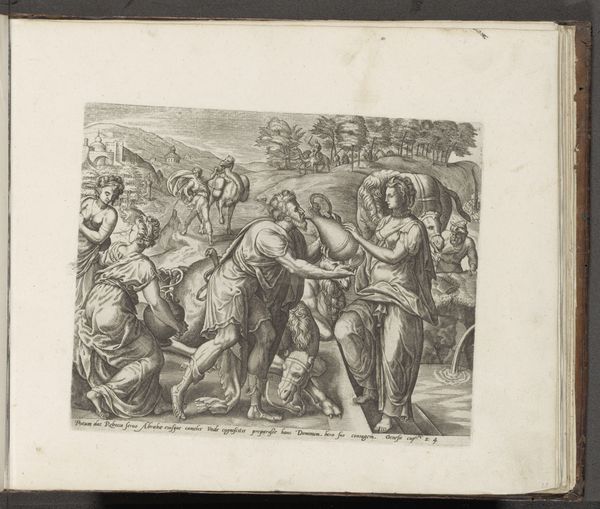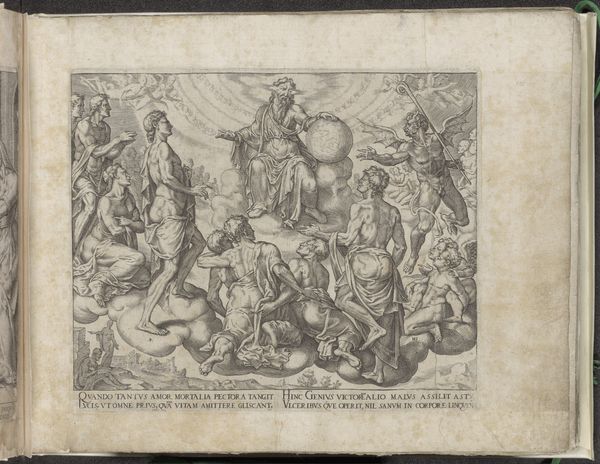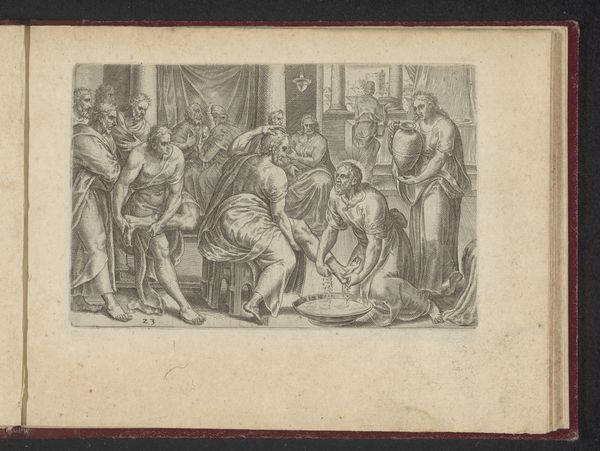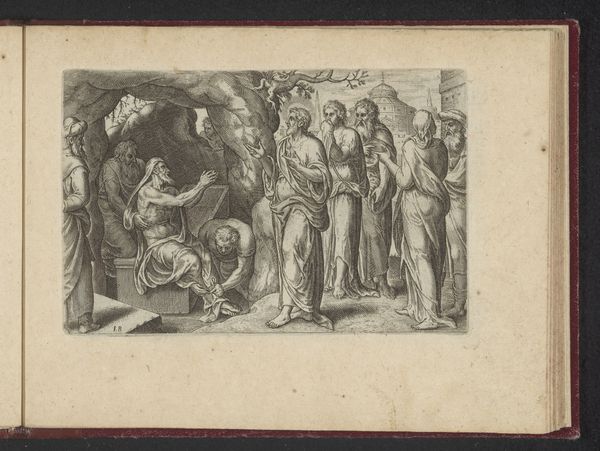
print, engraving
#
narrative-art
# print
#
figuration
#
line
#
history-painting
#
italian-renaissance
#
engraving
Dimensions: height 92 mm, width 139 mm, height 137 mm, width 183 mm
Copyright: Rijks Museum: Open Domain
Editor: This is Philips Galle’s "Ontmoeting met Veronica tijdens de kruisdraging," made in 1573. It's an engraving, so a print, depicting a scene from the Passion of Christ. The linear detail is incredible, but I'm struck by how brutal and almost industrial the whole scene feels. What do you see in it? Curator: I see an intentional rendering of suffering, not just in Christ, but in the materials used to depict the scene. Galle, through the very act of engraving – a laborious, repetitive process – echoes the physical burdens faced by those in the story and experienced by those in Early Modern society, the intended audience, performing repetitive labor. The emphasis is on process, on the sheer physical effort required to produce both the print and, allegorically, the labor of the cross. Do you think this connects to social realities of the 16th century? Editor: Absolutely! Thinking about the economics of printmaking, it allowed wider distribution of these religious narratives, almost like mass production for spiritual consumption. It changes the dynamic, right? Curator: Exactly! The accessibility afforded by printmaking challenges traditional notions of high art versus craft, blurring the lines and impacting who consumes religious imagery. How does this context change your reading of the print? Editor: I hadn't considered how the material and process mirror the socio-economic structures. The suffering isn't just performative; it's inherent in the production itself, connecting the religious narrative to everyday life and commerce. Curator: Precisely. We begin to consider the act of consuming religious imagery as participation in that labor economy. Editor: This engraving then becomes a material testament to more than just faith – it's about labour, materiality and even early capitalism. I appreciate the way this focus reshapes the narrative. Curator: And it pushes us to consider who benefited from this 'spiritual consumption' and the very real networks that enabled this production. A print is more than an image; it's a material product within a web of social relationships.
Comments
No comments
Be the first to comment and join the conversation on the ultimate creative platform.

